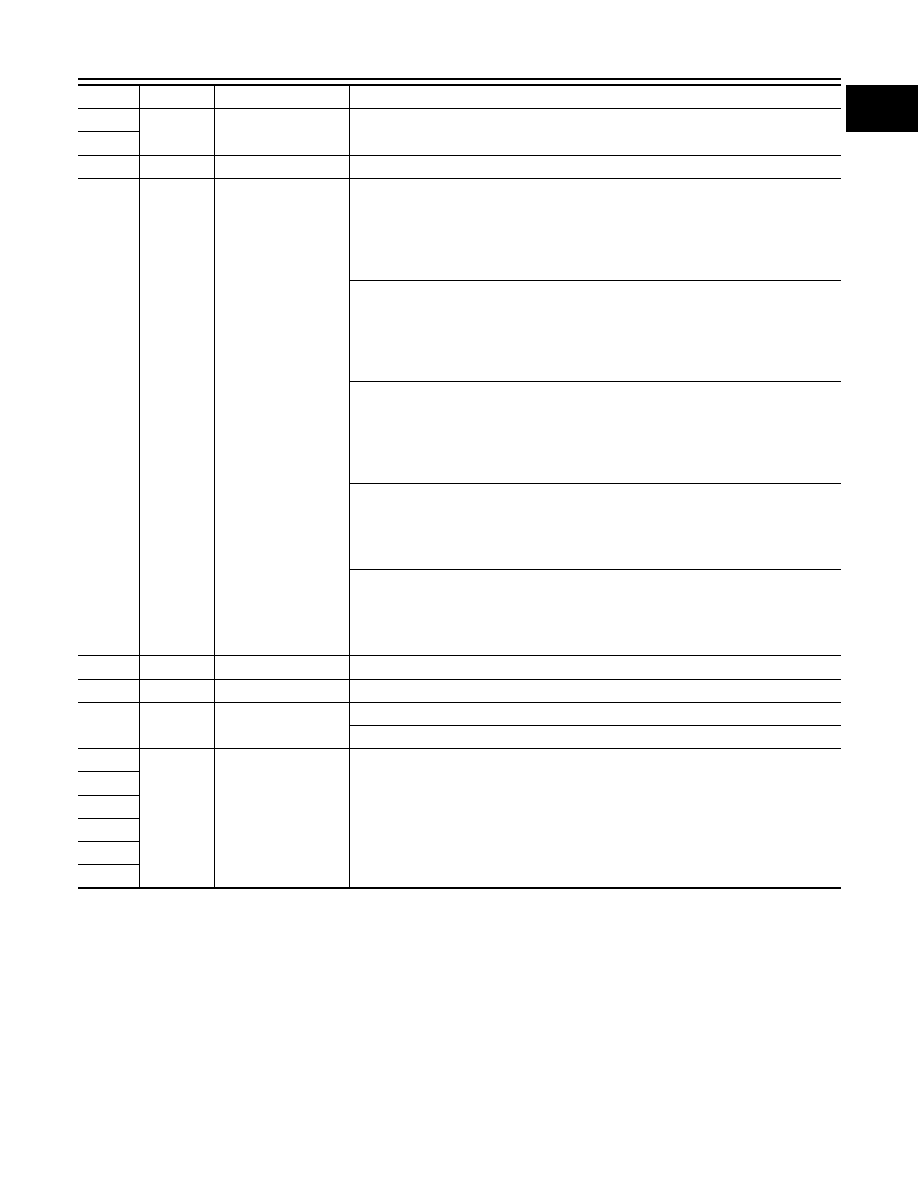Nissan Rogue. Manual - part 721

IDENTIFICATION INFORMATION
GI-35
< VEHICLE INFORMATION >
C
D
E
F
G
H
I
J
K
L
M
B
GI
N
O
P
5
T2
Model series
T2: T32 (Rogue)
6
7
M
Body type
M: 4 Door Wagon
8
L
Restraint system
K: 4WD, Class C (3 row, 7 seating capacity)
• (Driver and Passenger) 3-Point Manual Belts, Frontal Air Bags, Side Air Bags and
Curtain Side Air Bags.
• (2nd Row Outboard): 3-Point Manual Belts and Curtain Side Air Bags.
• (2nd Row Center): 3-Point Manual Belt.
• (3rd Row Outboard): 3-Point Manual Belts and Curtain Side Air Bags.
L: 2WD, Class C (3 row, 7 seating capacity)
• (Driver and Passenger) 3-Point Manual Belts, Frontal Air Bags, Side Air Bags and
Curtain Side Air Bags.
• (2nd Row Outboard): 3-Point Manual Belts and Curtain Side Air Bags.
• (2nd Row Center): 3-Point Manual Belt.
• (3rd Row Outboard): 3-Point Manual Belts and Curtain Side Air Bags.
M: 4WD, Class D (3 row, 7 seating capacity)
• (Driver and Passenger) 3-Point Manual Belts, Frontal Air Bags, Side Air Bags and
Curtain Side Air Bags.
• (2nd Row Outboard): 3-Point Manual Belts and Curtain Side Air Bags.
• (2nd Row Center): 3-Point Manual Belt.
• (3rd Row Outboard): 3-Point Manual Belts and Curtain Side Air Bags.
T: 2WD, Class C (2 row, 5 seating capacity)
• (Driver and Passenger) 3-Point Manual Belts, Frontal Air Bags, Side Air Bags and
Curtain Side Air Bags.
• (2nd Row Outboard): 3-Point Manual Belts and Curtain Side Air Bags.
• (2nd Row Center): 3-Point Manual Belt.
V: 4WD, Class C (2 row, 5 seating capacity)
• (Driver and Passenger) 3-Point Manual Belts, Frontal Air Bags, Side Air Bags and
Curtain Side Air Bags.
• (2nd Row Outboard): 3-Point Manual Belts and Curtain Side Air Bags.
• (2nd Row Center): 3-Point Manual Belt.
9
*
Check digit
(0 to 9 or X) The code for the check digit is determined by a mathematical computation
10
F
Model year
F: 2015
11
C
Manufacturing plant
C: USA production
P: Korea production
12
XXXXXX
Vehicle serial number Chassis number
13
14
15
16
17
Position
Character
Qualifier
Definition